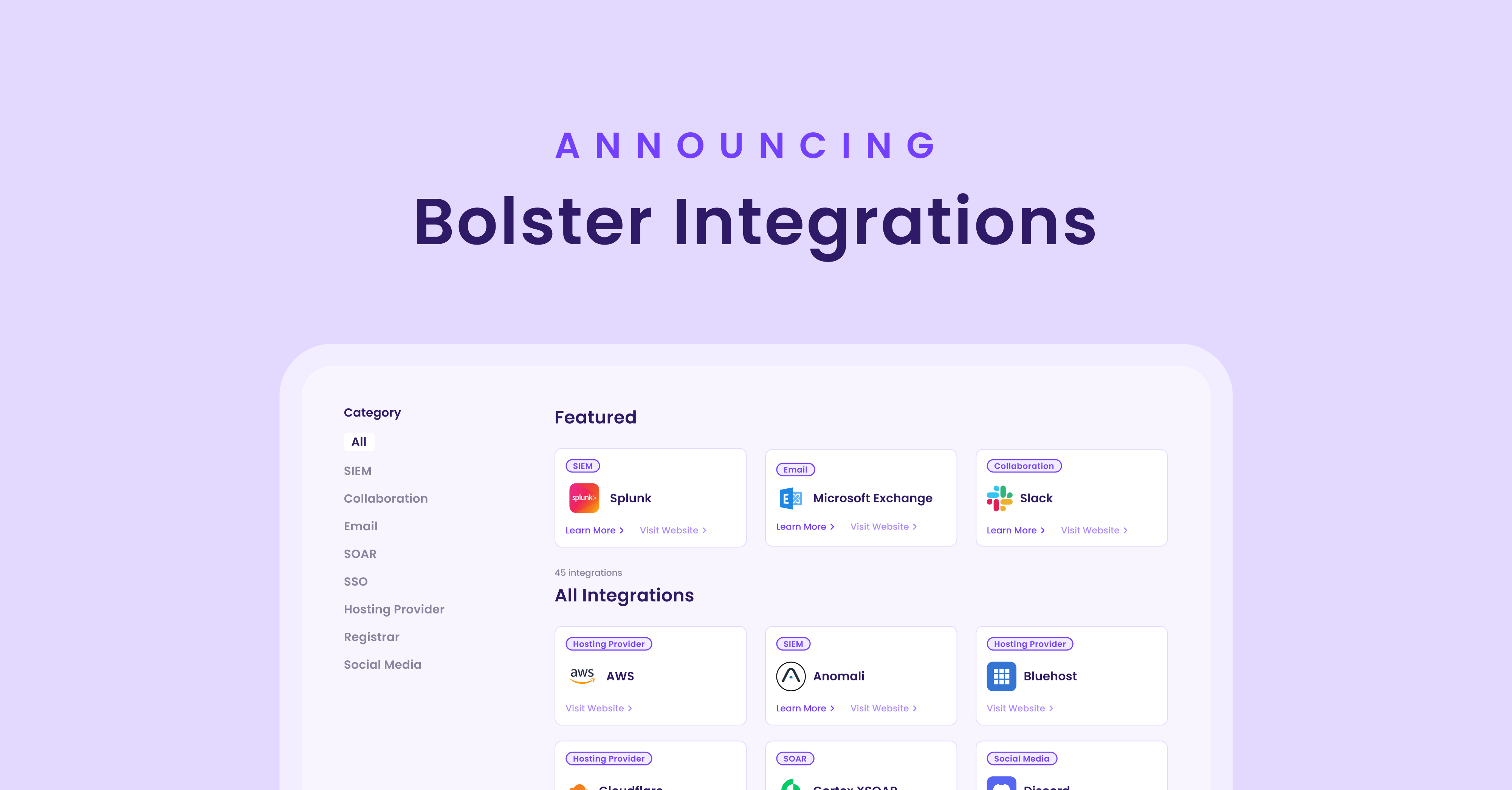For modern organizations operating in the digital economy, protecting digital assets with proactive prevention is always better and cheaper than a reactive response. And the best way to safeguard digital assets from cyberattacks and data breaches is with Digital Risk Protection Services (DRPS).
DRPS is a managed solution to protect digital assets and internal resources from external threats like cyberattacks and data breaches. DRP solutions bring dynamic threat detection and automated remediation techniques to enterprise security ecosystems. They complement the static risk prevention capabilities of traditional threat intelligence solutions.
Businesses of any size and at any level of security preparedness can detect and mitigate many kinds of digital threats and risks. DRPS empowers organizations to confidently use their digital technology to achieve their business goals.
What is Digital Risk?
Adopting new technologies enables organizations to streamline their workflows and processes, save time, reduce errors, and augment their human workforce. But the flip side is that digital expansion also expands their attack surface, which inevitably increases digital risk. Digital risk is the probability of damage or loss caused by a firm’s expanding digital ecosystem.
Digital risk increases the chances that malicious actors may threaten the organization’s security and business continuity. These threats can be internal, say from disgruntled employees or third-party vendors, or they can come from external sources like hackers, cybercriminals, rogue nation-states, and cyber terrorists. All these threats and threat actors contribute to the digital risk landscape.
To reduce the size of this landscape and keep threat actors out of their digital perimeter, organizations need Digital Risk Protection Services. In addition, they must understand the implications of adopting new technologies and be more cognizant of the nine types of digital risk they are – or may be – vulnerable to:
- Cybersecurity risk: The risk of cyberattacks and data breaches that may result in the unauthorized access of sensitive information and malicious acts like cyber extortion
- Cloud technology risk: Technological errors and failures affecting cloud systems and processes
- Process automation risk: Automation resulting in compatibility or governance issues
- Third-party risk: The risks of third-party breaches or intellectual property theft created by contracting with third-party vendors
- Data security and privacy risk: Risk affecting the security and privacy of sensitive data
- Data leaks: The risk of data exposure developing into a full-blown breach
- Workforce risk: Skill shortages, employee turnover, and other workforce-related issues that prevent the organization from achieving its business objectives
- Compliance risk: Business practices that breach regulatory compliance standards
- Resilience risk: Server outages, data breaches, and other risks that disrupt the availability of business services
Digital risk protection is a vital element of business and enterprise risk management. It focuses on threat detection and automated remediation workflows to mitigate detected threats before they can develop into cyberattacks or data breaches.
What is Digital Risk Protection?
Digital risk protection or DRP includes tools, strategies, and tactics to mitigate digital risk and protect the organization’s digital assets from cyberattacks. The overarching goal is to support the organization’s digital transformation efforts while managing and protecting its complex digital landscape. DRP efforts focus on protecting the organization’s external-facing digital assets from cybersecurity risk, insider threats, data leaks, automation risk, cloud technology risk, and third-party risk.
DRP systems are often considered synonymous with cyber threat intelligence (CTI) solutions, even though the two ideas are not the same. If anything, DRP is an extension of CTI. The main focus of digital threat intelligence is to improve the organization’s security posture so it can better withstand cyberattack attempts. DRP is more proactive since it focuses on keeping up with the organization’s expanding threat landscape, detecting threats, and preventing cyberattacks.
DRP involves the use of CTI insights plus intelligent algorithms and multiple reconnaissance methods to find and analyze threats in real time and raise warnings of imminent attacks to digital assets. Effective DRP can ease the burden of threat detection and mitigation on security teams. These threats and attacks may involve:
• Account takeovers
• Data leaks
• Fraud or extortion campaigns• Reputational damage
• Fraudulent social media accounts
• Spoofed enterprise domains
DRP based on comprehensive CTI supports multiple use cases. It provides comprehensive protection from phishing, one of the most common attack vectors used by modern-day cybercriminals. DRP tools also provide security teams with greater visibility into the dark web where a large proportion of criminal activity is planned and enable them to monitor the supply chain for breaches. They can also leverage DRP solutions to prioritize vulnerabilities and alerts, monitor illegal data auctions and leaked credentials, and identify malicious mobile apps.
What is Digital Risk Protection Services (DRPS) and Why Is it Important?
“These solutions (Digital Risk Protection Services) provide visibility into the clear (surface) web, dark web, and deep web sources to identify potential threats to critical assets and provide contextual information on threat actors and the tactics and processes utilized to conduct malicious activity.”–Gartner, Emerging Technologies: Critical Insights in Digital Risk Protection Services
Digital Risk Protection Services (DRPS) refers to a managed service offering that enables organizations to effectively detect, prioritize, and respond to threats to their externally-exposed digital assets. Effective DRPS enables organizations to efficiently scale up their digital risk protection efforts and effectively safeguard their public attack surface from malicious actors and activities.
With DRPS, companies get 360° omnichannel visibility into all the digital and social platforms and channels comprising their attack surface. Such expansive visibility allows them to proactively detect and quickly respond to threats, especially on channels and regions that other security solutions do not – or cannot – monitor. These include social media channels, IoT devices, operational technology (OT), and cloud solutions.
Managed DRPS eliminates the need for internal security teams to manually monitor or remediate threats. They also don’t have to manage multiple technologies for different channels. Instead, managed services and unified advanced threat detection technology can help them to continually analyze and protect the public attack surface from all kinds of physical, cyber, and brand threats.
DRPS provide access to automated security technology that can take down fraudulent websites and social media accounts, notify review forums about false posts, inform app stores about fake apps, and apprise online marketplaces about counterfeit merchandise. They can even take down attacker infrastructure to stop threat actors in their tracks and discourage future attacks.
The Four Key Quadrants of Digital Risk Protection Services (DRPS)
An effective DPRS incorporates four key dimensions or quadrants:
- Asset mappingThe security team discovers and maps all digital assets to determine the size of the enterprise attack surface, which could consist of externally-exposed assets, open ports, social media channels, mobile apps, domains, and unpatched vulnerabilities. The asset map provides the basis for monitoring cyber threats and digital risks to assets.
- Threat monitoringThis quadrant involves continually and proactively searching the web (public, dark, deep) for threats to identified enterprise asset. Security personnel leverage automated DPRS solutions to translate discovered threats into actionable threat intelligence that could reveal serious risks like data leaks, account compromises, and cyber extortion campaigns.
- Risk/threat mitigationThe DPRS solution automatically blocks and removes identified threats to enterprise digital assets. The solution must seamlessly integrate with existing security infrastructure. It must also provide robust executive reporting to inform and guide security investments and decisions.
- Risk management and ongoing protectionThe last quadrant involves managing the activities in the previous three quadrants and maintaining the organization’s threat protection perimeter. For ongoing and successful DRPS protection, it’s crucial to monitor the attack surface and detect and remediate vendor vulnerabilities.
To continually address all these quadrants, organizations need to identify, interpret, and remediate various kinds of digital threats. For this, they require DPRS that incorporate both a digital platform and the analytical capabilities of expert cybersecurity analysts.
Automated Digital Risk Protection vs. Traditional Threat Intelligence
Most organizations are vulnerable to attack on any channel and from any threat actor. Traditional threat intelligence solutions gather and analyze data from a range of sources to build a snapshot of the threat landscape. They are useful because they can identify emerging threats and support mitigation activities before a threat can result in a full-blown attack.
However, these solutions are not without their challenges. For one, most are reactive programs and therefore cannot always provide the early warnings organizations need to keep many kinds of threats at bay. They also rarely focus on collecting and analyzing data from the dark web, which is where many real-world threats originate, further limiting their ability to raise early alerts.
Another drawback of traditional CTI programs is that they don’t provide enough visibility and intelligence into external-facing critical vulnerabilities. DRPS focuses on identifying and mitigating the threats targeting assets that lie outside the protective walls of the enterprise network. It combines threat intelligence, threat detection, and automated risk mitigation across the external digital risk landscape.
The most effective DRPS incorporate multiple elements: cutting-edge, automated technologies, intelligent algorithms, data collection and curation methods, and expert human analysis. Together, these elements provide a robust first line of enterprise defense to take down look-alike domains, prevent account takeover attacks, detect data leaks, mitigate social media threats, and protect the reputation of the brand and senior executives.
Traditional threat intelligence is mainly about risk prevention and planning. It has strategic value since it informs enterprise cybersecurity programs and focuses on gathering and analyzing large sets of data over an extended period. DRPS is about detecting and responding to digital threats. It is more operational so it has an immediate impact on threat detection and mitigation, and ultimately on business resiliency.
While threat intelligence is useful to identify many types of threats, it is still a partial solution that is not optimized to efficiently address active external threats. Moreover, it relies on the maturity of the cybersecurity program to truly deliver value. DRPS is immediately actionable and provides the operational focus needed to quickly identify and mitigate external threats.
Plus, DPRS is a flexible and adaptable offering that doesn’t depend on cybersecurity program maturity. Any organization can derive ongoing value from DRPS by combining security protection functions and adding more functions as required over time. Such flexibility and adaptability enables organizations to cost-effectively scale up their security programs and combat external threats.
Automation: A Crucial Element of DRPS in Modern Threat Environments
Modern DRPS solutions provide automated data handling and analysis capabilities. Automation is crucial to keep security teams from getting overwhelmed by threat intelligence data and overlooking relevant, potentially dangerous threats. The intelligent algorithms in DRPS platforms automatically sift through masses of security data and prioritize alerts so teams can address the most pressing issues and protect the organization.
Automated DRPS can continuously and effectively find and address risks to the organization’s digital assets in real time. Responses are based on predefined criteria and initiated automatically, thus ensuring better security for users and data.
As part of a proactive defensive strategy, automated DRPS can effectively counter risks across an organization’s entire digital footprint. Over time, it empowers organizations of any size and in any industry to improve operational efficiency and protect their brand reputations. For all these reasons, Gartner expects the target audience for DRPS to increase from just 1% in 2020 to 10% in 2025.
Bolster: Automated DRPS for Advanced Enterprise Digital Risk Protection
Bolster is the only automated DRP platform in the world that detects, analyzes, and takes down fraudulent content across the web, social media, app stores, marketplaces, and even the dark web. It incorporates state-of-the-art technology to protect enterprise external attack surfaces – without the need for legacy solutions or time-consuming manual efforts.
This automated DRP platform uses image recognition to detect a wide range of threats. It provides 360-degree coverage and immediate visibility into counterfeit websites, fraudulent content, phishing sites, and many other digital risks.
Bolster takes threat intelligence to the next level with built-in threat hunting tools, a full-featured configurable dashboard, and a bulkscan “sandbox”. It offers comprehensive real-time detection with advanced capabilities for automated daily monitoring, scam detection, and malicious content scanning. It also provides real-time precision threat analysis powered by Computer Vision, Artificial Intelligence, and Natural Language Processing. Legacy security tools just cannot provide these advanced capabilities.
Yet another benefit of Bolster is that it offers zero code SecOps automation. The solution works out of the box for automated monitoring of websites, domains, and app stores, AI-based detection of phishing and typosquat attacks, automated alert triaging, and automated threat remediation.
With Bolster, security teams can consolidate up to five tools and automate the detection, analysis, and rapid removal of threats from their digital ecosystem.
To try Bolster for free, schedule a free demo.
Frequently Asked Questions
- Why do I need digital risk protection?Expanding digitization introduces serious risks into your organization. DRPS helps reduce many of these risks and protects the enterprise’s digital assets, data, and brand. It safeguards the public attack surface and provides security teams with actionable threat insight from the surface, deep, and dark web. Traditional security solutions and threat intelligence platforms cannot counter new risks or protect the organization from emerging threats. To monitor and identify specific digital risks in real time, DRPS is essential.
- When should I invest in DRPS?The best time to start securing your digital landscape is now. If your digital presence is expanding, you likely face most or all of the nine different types of digital risk. Increasing interconnectivity between assets also increases the risk that a threat actor may attack your enterprise and compromise your data. DRPS protects your business-critical assets and brand reputation. That’s why the sooner you invest in DRPS solutions, the faster you can shore up your defenses to keep the bad guys out.
- How do I know if I need DRPS?If your organization has a web presence, conducts at least part of the business online, or worries about the frequency and impact of digital risk, you need DRPS for ongoing digital security. DRPS is also vital for organizations that have experienced cyberattacks in the past. Companies that want proactive and automated protection against digital risk will also benefit from DRPS.
- How is DRPS different from threat intelligence?Traditional threat intelligence solutions gather and use security data to defend internal digital assets from external threats, DRPS combines threat intelligence with intelligent algorithms and expert human analysis to proactively identify and mitigate threats to enterprise assets lying outside the enterprise security perimeter. Threat intelligence takes a strategic approach and informs defensive security programs while DRPS is more operational and focuses on immediate impact.
- What are some of the risks and threats that DRPS can protect against?DRPS can reduce the size of the attack surface, secure the organization’s online brand, and detect data loss. It can also prevent sensitive data breaches, reputational damage, and fraud campaigns. Further, automated DRP platforms built on comprehensive threat intelligence enable phishing detection, vulnerability prioritization, malicious app identification, leaked credentials monitoring, and automated threat response and mitigation.









